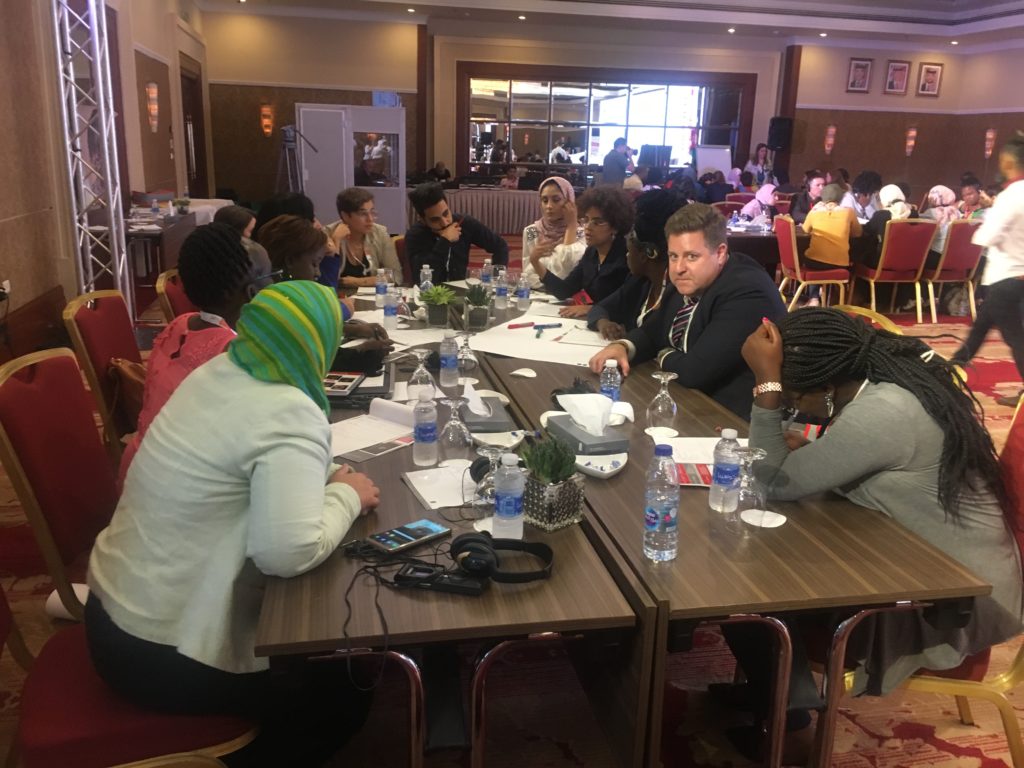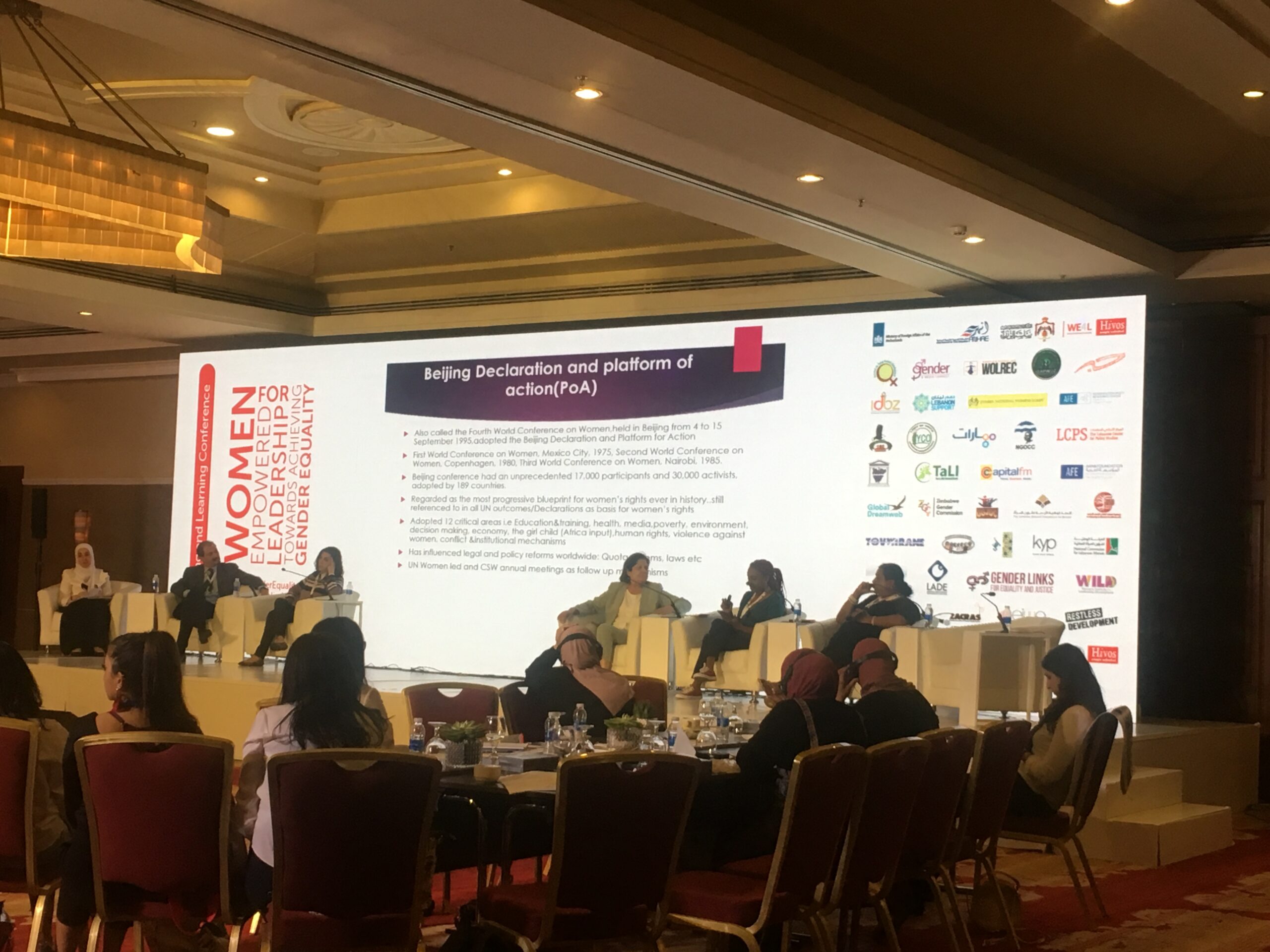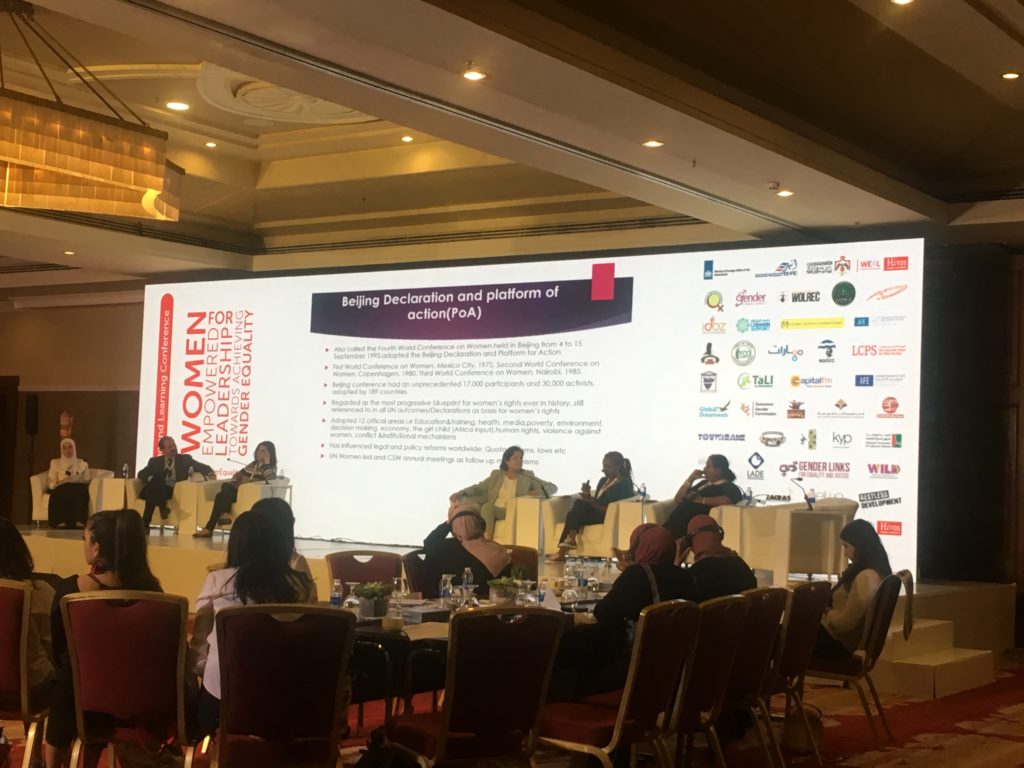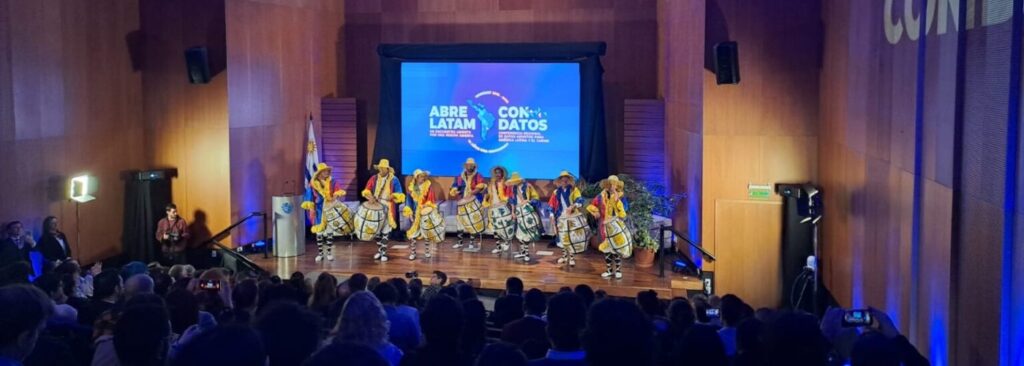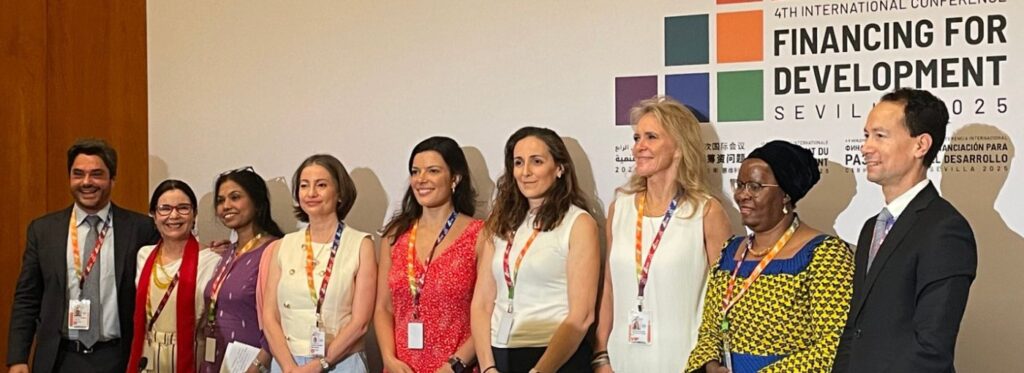id=”709″ id=”post-2135″ class=”wp-post-content-block ” itemscope itemtype=”http://schema.org/BlogPosting” itemprop=”blogPost”>
Linking and Learning 2019, international instruments for achieving gender equality
By Shara Jazzar
Despite the international efforts made to reduce the gender gap, it still exists with a percentage of 32%, in particular when it comes to political and economic empowerment. Thus, what are the international instruments that can be used for achieving gender equality?
First of all, it is important to note that there is a difference between international instruments that are legally binding and political commitments that are not legally binding.
The different mechanisms
Akram Khalaf, from ESCWA shed the light on the monitoring mechanisms for the implementation of agreements and treaties related to women, in particular CEDAW. The latter requests periodic reports that should be sent to CEDAW committee to ensure its proper implementation. Furthermore, delegates can be sent to a country in order to evaluate the situation both through meetings officials and members of the civil society.
As for the Beijing+25 convention, Chantal Umuhoza underlined that its adoption “was a historic moment when women mobilized for change.” Furthermore, 46 out of 55 African countries have engaged in the process, which is promising in terms of its implementation.
In parallel, Layla Naffa from AWO in Jordan specified that the task towards achieving SDG 5 is more difficult today because there is a high level of resistance in regards to achievements related to women. However, we should move forward to ensure that we do not lose any of our accomplishments. Furthermore, Layla highlighted that her organization took the initiative to inform women in Jordan of the SDG 5 in order to ensure their involvement.
From her side, Pascale Moussalli from the NCLW in Lebanon pinpointed the fact that the Lebanese government does not collect data, which negatively impacts the work of the commission and consequently the development of relevant policies. Through its cooperation with Hivos, the NCLW has developed a gender tool that enables it to monitor the situation of women in Lebanon through surveys and the collection of information on particular topics.
Finally, Kubashini Rama from Gender Links in South Africa believes that we should drive the SDG agenda and not the other way around. Furthermore, we need to think about what these frameworks mean and how we use them now. Also, we should work with local communities in order to influence national policies through national councils.
